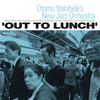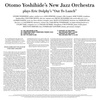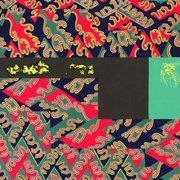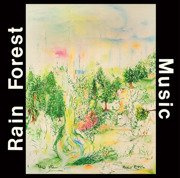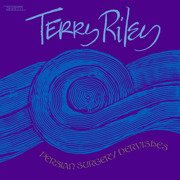- PLAY ALL / Otomo Yoshihide's New Jazz Orchestra - 01 Hat And Beard.mp3 (Out To Lunch) / Otomo Yoshihide's New Jazz Orchestra - 02 Something Sweet, Something Tender.mp3 (Out To Lunch) / Otomo Yoshihide's New Jazz Orchestra - 03 Gazzelloni.mp3 (Out To Lunch) / Otomo Yoshihide's New Jazz Orchestra - 04 Out To Lunch.mp3 (Out To Lunch) / Otomo Yoshihide's New Jazz Orchestra - 05 Straight Up And Down - Will Be Back Part I.mp3 (Out To Lunch) / Otomo Yoshihide's New Jazz Orchestra - 06 Straight Up And Down - Will Be Back Part II.mp3 (Out To Lunch)
- 01 Hat And Beard.mp3 / Otomo Yoshihide's New Jazz Orchestra - 01 Hat And Beard.mp3 (Out To Lunch)
- 02 Something Sweet, Something Tender.mp3 / Otomo Yoshihide's New Jazz Orchestra - 02 Something Sweet, Something Tender.mp3 (Out To Lunch)
- 03 Gazzelloni.mp3 / Otomo Yoshihide's New Jazz Orchestra - 03 Gazzelloni.mp3 (Out To Lunch)
- 04 Out To Lunch.mp3 / Otomo Yoshihide's New Jazz Orchestra - 04 Out To Lunch.mp3 (Out To Lunch)
- 05 Straight Up And Down - Will Be Back Part I.mp3 / Otomo Yoshihide's New Jazz Orchestra - 05 Straight Up And Down - Will Be Back Part I.mp3 (Out To Lunch)
- 06 Straight Up And Down - Will Be Back Part II.mp3 / Otomo Yoshihide's New Jazz Orchestra - 06 Straight Up And Down - Will Be Back Part II.mp3 (Out To Lunch)
Eric Dolphy's final studio album is hailed as one of the finest examples of mid-'60s post bop. Its reputation is purely one of backwards significance. Dolphy, having recorded the album in February 1964, was in Europe less than six weeks later and his all-too-brief life ended less than two months after that. Though likely he never held a copy in his hands or heard any critical opinion of it, it marked his last flurry of original compositions and is considered his apex. It is fascinating to consider whether he would had moved past or away from the album in 1965, had he lived.
Though Dolphy should not be considered an avant-garde musician by the term's most common definitions, most interpretations of Out To Lunch have been done by players working squarely in that area. So it is with this album, the most ambitious in its recreation of the five-tune disc (with one original added to the final "Straight Up and Down, extending the piece to almost thirty minutes). All five compositions from the original quintet LP are revisited in the same order, the record sleeve even duplicates the old album jacket, down to the typeface and black-and-blue color scheme, although a photo taken by Daidō Moriyama inside Tokyo's massive (and massively busy) Shinjuku railway station replaces the Dolphy's album's enigmatic "Will Be Back" sign, whose clock hands indicated no conventional time of expected return.
Otomo Yoshihide first came to international prominence in the 1990s as the leader of the experimental rock group Ground Zero, and has since worked in a variety of contexts, ranging from free improvisation to noise, jazz, avant-garde and contemporary classical. The always surprising and sometimes confounding turntablist, sound artist, onkyo improviser and now avant jazzer heading up a 15-piece aggregation of Japanese and European experimentalists. Who better to grapple with Dolphy's legacy -- so idiosyncratic in its day and yet so influential to creative improvisers who followed -- than a musician with his own singular take on how sounds can be organized in the jazz realm over 40 years later and half a world away? In other words don't expect the conventional from Otomo any more than you would from Dolphy himself. That's not to say that recognizable themes ("Hat and Beard," "Out to Lunch," "Straight Up and Down") don't appear, or that individual players -- including Alfred Harth on bass clarinet bursting into the mix and leaping across the instrument's tonal range in a way that recalls the master himself -- don't carry forward echoes from the past in the spirit of a sincere and heartfelt homage.
However, a good deal of the time all bets are off; in addition to the usual brass, reeds, bass, and drums (and of course a bit of vibraphone, here played by Takara Kumiko in far less prominent role than that of Bobby Hutcherson) are such sonic paraphernalia as sine waves, contact mike, no-input mixing board, and, of course, "computer." (Otomo himself plays skronky electric guitar.) From composition to composition and even during episodes within compositions, the band takes radically different approaches. There are blasts of free jazz energy not too far removed from the Peter Brötzmann Tentet, an impression reinforced by the presence of spluttering wildman Mats Gustafsson on baritone sax. Not surprisingly and often in contrast with the Dolphy original, the music is dense and filled to overflowing with sounds -- sometimes due to fundamental reworkings in structure rather than just the larger size of the ensemble. The middle section of "Something Sweet, Something Tender" somewhat belies the original's title with elongated howls and cries from the horns over slo-mo bass, drums, and electronic noise poised somewhere between dirge and drone, and the sudden explosion of punk-ish rock energy in the following "Gazzelloni" is a startling contrast.
At times, the feeling is that of listening to the original Out To Lunch while a séance is going on to contact Dolphy's ghost, with supernatural sounds swirling around the stereo. The effect is disconcerting, as is the post-apocalyptic cloud hanging over the arrangements, but it makes the effort more than an unnecessary tribute album. Instead, Dolphy is transported into the 21st Century and allowed to romp through modern developments in music. An inspiring concept and an album that will stretch the boundaries of anyone who comes into contact with it.



